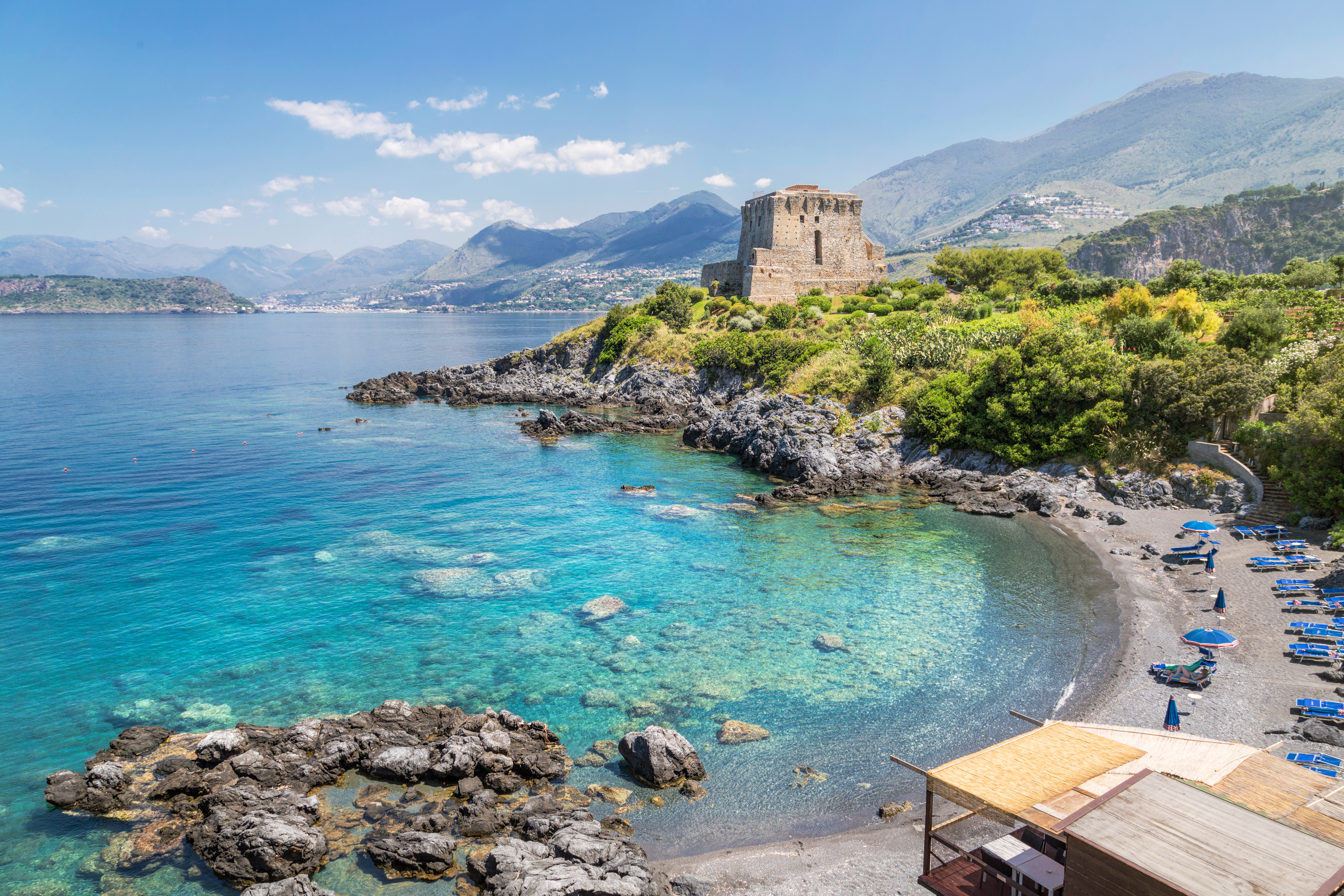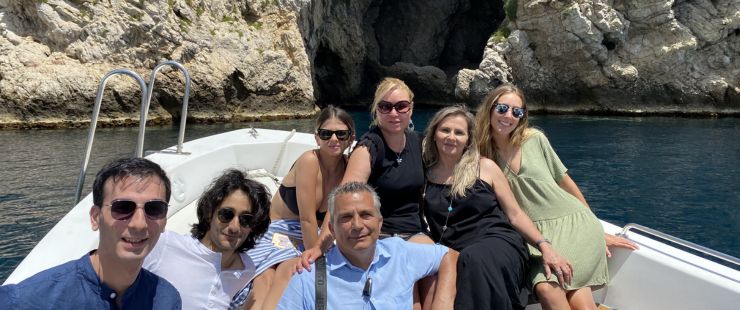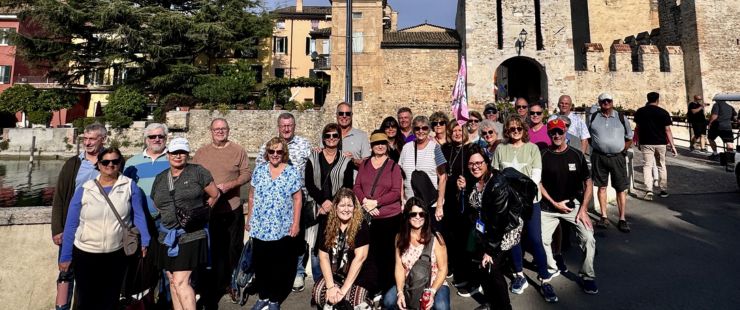On your way from Rome to the Amalfi Coast, the abbey of Monte Cassino is a place so few visitors to Italy ever care to see, though it is a great one! Not only does it make for a wonderful view and look over the region of Campania, it's a place where you just can't ever believe a church could ever be built. With fierceless determination and resilience, the monks here built an incredible place - one that is bypassed by many, but which is truly worth a stop on your way from Rome to Naples or vice versa and even for those wanting to do a day trip from Rome, visiting Monte Cassino makes for an aboslutely incredible dayQ!
Juat about - 130 kilometres (81 mi) southeast of Rome, Italy, c. 2 kilometres (1.2 mi) to the west of the town of Cassino (the Roman Casinum having been on the hill) and 520 m (1,706.04 ft) altitude.
St. Benedict of Nursia established his first monastery, the source of the Benedictine Order, here around 529. It was the site of the Battle of Monte Cassino in 1944, where the building was destroyed by Allied bombing and rebuilt after the war. The site has been visited many times by the Popes and other senior clergy, including a visit by Pope Benedict XVI in May 2009. The monastery is one of the few remaining territorial abbeys within the Catholic Church. Until his resignation was accepted by Pope Francis on 12 June 2013, the Territorial Abbot of Monte Cassino was Pietro Vittorelli.
According to Gregory the Great's biography of Benedict, Life of Saint Benedict of Nursia, the monastery was constructed on an older pagan site, a temple of Apollo that crowned the hill. The biography records that the area was still largely pagan at the time and Benedict's first act was to smash the sculpture of Apollo and destroy the altar. He then reused the temple, dedicating it to Saint Martin, and built another chapel on the site of the altar dedicated to Saint John the Baptist. Archaeologist Neil Christie notes that it was common in such hagiographies for the protagonist to encounter areas of strong paganism.[2] Once established at Monte Cassino, Benedict never left. There he wrote the Benedictine Rule that became the founding principle for western monasticism. There at Monte Cassino he received a visit from Totila, king of the Ostrogoths, perhaps in 543 (the only remotely secure historical date for Benedict), and there he died.
Monte Cassino became a model for future developments. Unfortunately its prominent site has always made it an object of strategic importance. It was sacked or destroyed a number of times. In 581, during the abbacy of Bonitus, the Lombards sacked the abbey, and the surviving monks fled to Rome, where they remained for more than a century. During this time the body of St Benedict was transferred to Fleury, the modern Saint-Benoit-sur-Loire near Orleans, France.
A flourishing period of Montecassino followed its re-establishment in 718 by Abbot Petronax, when among the monks were Carloman, son of Charles Martel; Ratchis, predecessor of the great Lombard Duke and King Aistulf; and Paul the Deacon, the historian of the Lombards.
In 744, a donation of Gisulf II of Benevento created the Terra Sancti Benedicti, the secular lands of the abbacy, which were subject to the abbot and nobody else save the Pope. Thus, the monastery became the capital of a state comprising a compact and strategic region between the Lombard principality of Benevento and the Byzantine city-states of the coast (Naples, Gaeta, and Amalfi).
In 884 Saracens sacked and then burned it down,[3] and Abbot Bertharius was killed during the attack. Among the great historians who worked at the monastery, in this period there is Erchempert, whose Historia Langobardorum Beneventanorum is a fundamental chronicle of the ninth-century Mezzogiorno.
It was rebuilt and reached the apex of its fame in the 11th century under the abbot Desiderius (abbot 1058 - 1087), who later became Pope Victor III. The number of monks rose to over two hundred, and the library, the manuscripts produced in the scriptorium and the school of manuscript illuminators became famous throughout the West. The unique Beneventan script flourished there during Desiderius' abbacy.
The buildings of the monastery were reconstructed on a scale of great magnificence, artists being brought from Amalfi, Lombardy, and even Constantinople to supervise the various works. The abbey church, rebuilt and decorated with the utmost splendor, was consecrated in 1071 by Pope Alexander II. A detailed account of the abbey at this date exists in the Chronica monasterii Cassinensis by Leo of Ostia and Amatus of Monte Cassino gives us our best source on the early Normans in the south.
Abbot Desiderius sent envoys to Constantinople some time after 1066 to hire expert Byzantine mosaicists for the decoration of the rebuilt abbey church. According to chronicler Leo of Ostia the Greek artists decorated the apse, the arch and the vestibule of the basilica. Their work was admired by contemporaries but was totally destroyed in later centuries except two fragments depicting greyhounds (now in the Monte Cassino Museum). "The abbot in his wisdom decided that great number of young monks in the monastery should be thoroughly initiated in these arts" - says the chronicler about the role of the Greeks in the revival of mosaic art in medieval Italy.
An earthquake damaged the Abbey in 1349, and although the site was rebuilt it marked the beginning of a long period of decline. In 1321, Pope John XXII made the church of Monte Cassino a cathedral, and the carefully preserved independence of the monastery from episcopal interference was at an end. In 1505 the monastery was joined with that of St. Justina of Padua.
The site was sacked by Napoleon's troops in 1799 and from the dissolution of the Italian monasteries in 1866, Monte Cassino became a national monument.
During the Battle of Monte Cassino (January - May 1944) the Abbey made up one section of the 161 kilometre (100 miles) Gustav line, which was a defensive German line designed to hold the Allied attackers from advancing any further into Italy during World War Two. It stretched from coast to coast and the monastery was one of the key strongholds overlooking highway 6 and blocking the path to Rome. On 15 February 1944 the abbey was almost completely destroyed in a series of heavy American led air-raids.
The bombing was conducted because many reports from troops on the ground suggested that Germans were occupying the monastery, and it was considered a key observational post by all those who were fighting in the field.[4] However, actually during the bombing no Germans were present. It is certain from every investigation that followed since the event that the only people killed in the monastery by the bombing were 230 Italian civilians seeking refuge in the abbey.[5] After the bombing the ruins of the monastery were occupied by German Fallschirmjäger, aiding them in their defense, because the ruins provided excellent defensive cover.[6] The heavily outnumbered Germans held the position until withdrawing on 17 May 1944, having repulsed four main offensives by the New Zealanders, British Indian division and Polish corps. Allied forces broke the line between 11 and 17 May and were finally able to take command of the ruins on 18 May. The Abbey was rebuilt after the war; Pope Paul VI reconsecrated it in 1964.





























